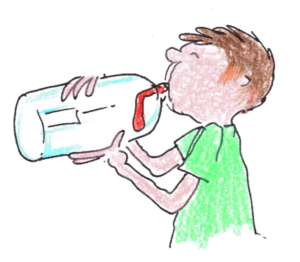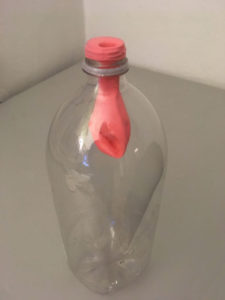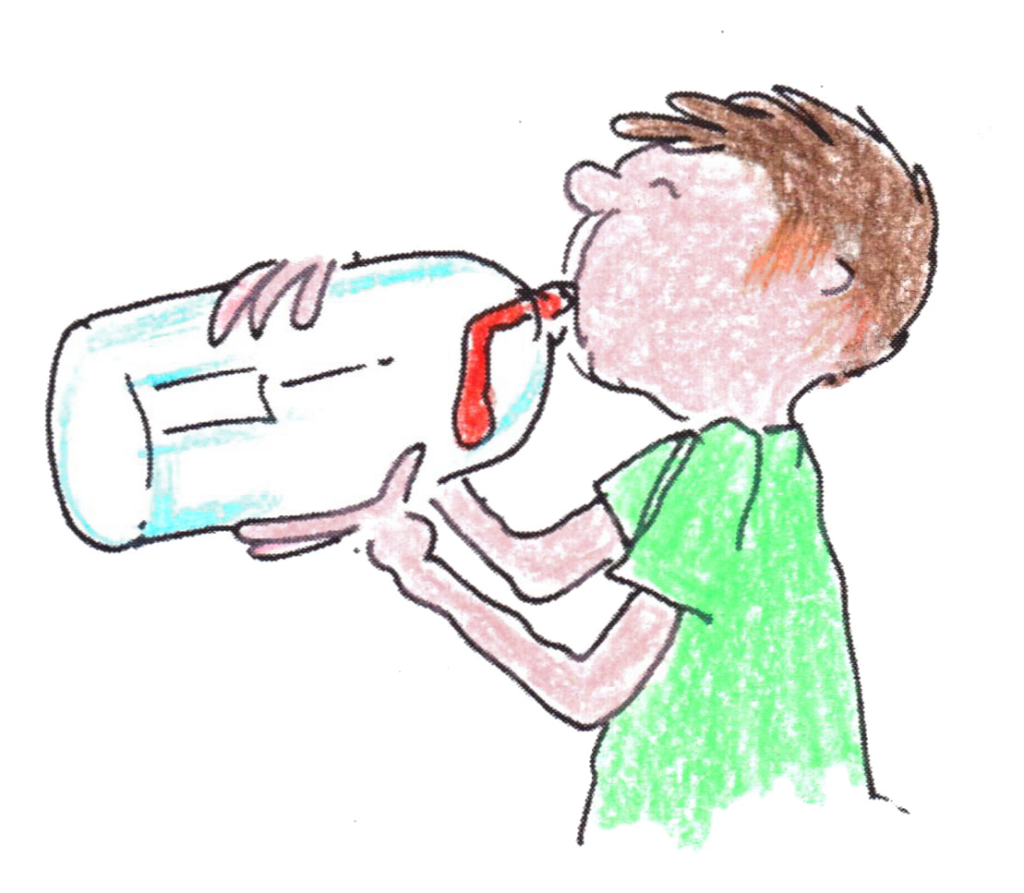 |
All you need is a plastic bottle and a balloon!
Insert the balloon into a clean empty plastic bottle and pull the mouth of the balloon over the mouth of the bottle. Ask a volunteer to inflate the balloon. It’s impossible! Why? The bottle is full of air and the air inside must be compressed to add more air as you inflate the balloon. You just don’t have the ability to compress the air. |
 |
Do you have another bottle? Punch a hole in the bottom of the plastic bottle with a thumb tack and widen it with an X-acto knife to about a quarter inch. Now when you try to inflate the balloon in the bottle, the volunteer finds it’s easy to inflate the balloon.
What’s the difference? Air can escape out the hole in the bottom of the bottle. The volunteer doesn’t need to compress the air in order to inflate the balloon. If the volunteer covers the hole after inflating the balloon it stays inflated inside the bottle. The air pressure is balanced between the air in the bottle and the air in the balloon. If the air pressure wasn’t balanced, the balloon would inflate or deflate.
This activity can be a great discrepant event. It can be used during an open house with parents. If you have enough balloons, you could add it to a station at your family science night.
Suggestion: When you store the bottle with the hole in the bottom mark it somehow so you know not to fill it with water for a different activity and end up with a puddle of water on the floor!
For more about this quick science activity:
- Tellus World of Science
- Jared does this as a teacher demonstration with a slightly different bottle
- there’s no “suck” in physics so you might mute the video to avoid this misconception
- there is air pressure in the bottle pushing on the balloon after he inflates the balloon in the bottle
- I Can Teach My Child
Quick Science suggestions take minimal prep time and use common materials.

